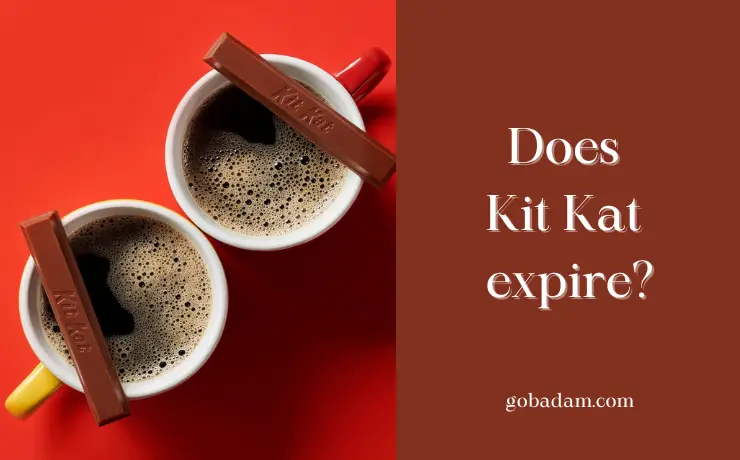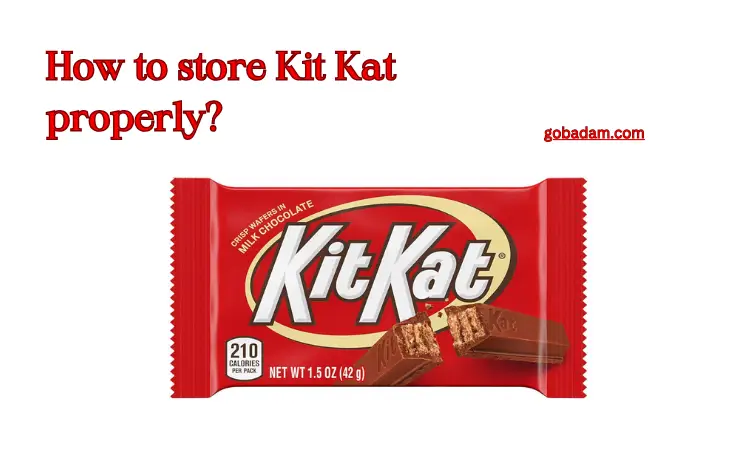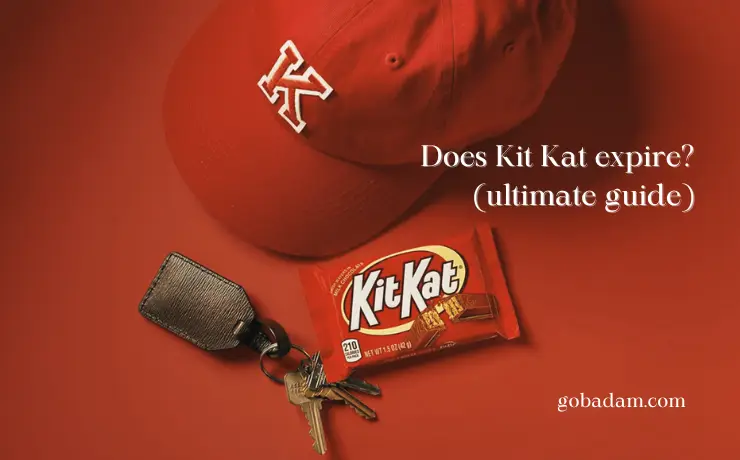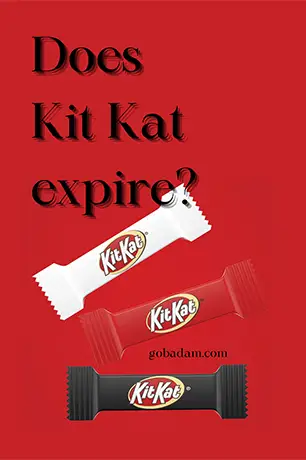Does Kit Kat expire? Ah, the age-old conundrum faced by chocolate aficionados everywhere! Before you take a ‘break’ with your favorite wafer treat, it’s essential to consider its shelf life and those sneaky storage conditions that can play hide and seek with your sweet’s freshness.
Explore one of the top Halloween snacks 👉🏻kit kat candy bars
From the tell-tale signs that your Kit Kat might have gone on a bit too long of a hiatus, to the tricks of keeping its crunchy core and silky chocolate intact, understanding packaging integrity, and even the global variations that add that twist of mystery—there’s a world of delicious details to unwrap. Let’s dive into the delectable dimensions of Kit Kat’s date with time!
Does Kit Kat expire?
Yes, Kit Kats, like all chocolates, do have an expiration date. The shelf life is influenced by storage conditions and packaging.
Kit Kats come with a “best before” date on their packaging, which indicates the period within which the product maintains its optimal taste and texture. However, it doesn’t necessarily mean that the chocolate is unsafe to eat after this date.
The expiration date primarily concerns the product’s quality, not safety. Over time, especially if stored improperly, Kit Kats may develop a white discoloration called “bloom.” This is a result of fat or sugar crystals rising to the surface and doesn’t indicate spoilage but can affect texture and taste.
You may also be interested in do Snickers expire, do Hershey chocolate bars go bad and does Halloween candy expire.

How long does a Kit Kat last?
A Kit Kat typically lasts between 6 to 12 months when stored under proper conditions. The duration largely depends on the specific product variant and its packaging. However, a crucial aspect to understand is the difference between the “best before” date and the actual expiration date for chocolates.
The “best before” date on a Kit Kat’s packaging refers to the recommended time frame for consuming the chocolate to experience its optimal taste and texture. After this date, while the chocolate may still be safe to eat, there might be noticeable changes in its flavor, appearance, or mouthfeel. It’s essentially a guideline provided by manufacturers to ensure that consumers enjoy their product at its best.
Kit Kat expiration date
The actual expiration date, on the other hand, signifies the point beyond which the product might not be safe to consume. For most chocolates, including Kit Kats, the “best before” date is more common than a strict expiration date since chocolates have a relatively long shelf life. The presence of sugars and the low water content in chocolates act as natural preservatives.
To get the most out of your Kit Kat, always store it in a cool, dry place, away from strong odors and direct sunlight. If stored properly, even after the “best before” date, it can be enjoyed, though with possible minor changes in its characteristics. If you’re ever in doubt about its quality, trust your senses; any off smells, unusual colors, or mold are clear indicators that it’s time to let go.

Kit Kat Spoilage Signs
When determining the freshness of a Kit Kat or any chocolate for that matter, there are certain spoilage signs to be on the lookout for:
White Discoloration: Often mistaken for mold, this whitish layer on the chocolate’s surface is known as “bloom.” There are two types of bloom: fat bloom, caused by changes in the fat crystals in the chocolate, and sugar bloom, caused by the crystallization of sugar on the surface due to moisture. While not harmful, the bloom can affect the chocolate’s texture and taste.
Off Smell: If a Kit Kat gives off an unusual or rancid odor, it’s a clear sign of spoilage. This can be due to the degradation of its ingredients or contamination from external sources.
Mold: While rare, chocolate can develop mold, especially if it’s been stored in a damp environment or the packaging has been compromised. If there’s any sign of mold on the chocolate, it’s best to discard it.
Texture: A Kit Kat that’s too hard or has an unusually crumbly texture can indicate spoilage or that it was stored under unfavorable conditions.
Taste: If a Kit Kat tastes off or stale, even if it looks fine, it’s best not to consume the rest.
Damaged Packaging: If the packaging is torn, punctured, or shows signs of damage, the chocolate inside might be exposed to contaminants or air, accelerating spoilage.
Presence of Bugs: In rare cases, if chocolates are stored for long periods or under poor conditions, they might attract pests. If there’s any sign of bugs or insect infestation, discard the chocolate.
It’s always advisable to check your Kit Kat before consumption, especially if it has been stored for a prolonged period. While some signs, like bloom, don’t render the chocolate unsafe, others, like mold or a rancid smell, are clear indicators that it’s time to throw it away.
How to store Kit Kat properly?
Storing chocolates, such as Kit Kat, in the right manner ensures that they retain their freshness, taste, and texture for the longest time possible. Let’s delve into the specific practices and conditions to achieve this:
Temperature Control
Chocolates like Kit Kat are best stored at a temperature between 60°F and 70°F (15°C to 21°C). Excessively high temperatures can cause the chocolate to melt, while extremely low temperatures can affect the texture and flavor.
Away from Direct Sunlight
Direct sunlight can increase the temperature of the chocolate and lead to melting. Furthermore, UV rays can degrade the quality of the chocolate over time. Always store your Kit Kats in a cool, dark place.
Moisture Prevention
Humidity is not a friend to chocolates. Moisture can lead to sugar bloom, where sugar crystals form on the chocolate’s surface. Ensure the storage area is dry and free from excessive humidity.
Airtight Containers
If you’re not storing your Kit Kat in its original packaging, consider placing it in an airtight container. This prevents air from affecting the chocolate and also safeguards it from absorbing strong odors, which can alter its flavor.
Avoid Strong Odors
Chocolate has a tendency to absorb strong odors. Storing Kit Kats away from items with strong scents, like spices or perfumed products, will ensure that they maintain their original flavor profile.
Refrigeration: Yes or No?
While it’s not typically recommended to refrigerate chocolates due to the risk of condensation leading to sugar bloom, if you must (due to hot climates or lack of cool storage space), ensure the Kit Kat is in an airtight container. When you want to eat it, take it out and let it come to room temperature before unwrapping to minimize condensation.
By following these storage guidelines, you can extend the shelf life of your Kit Kat and enjoy its delicious taste and texture for as long as possible. If you want to refresh your Kit Kat stocks, now is a good time for this. You may also be interested in Does Halloween candy expire.
While you’re making your Halloween preparations, don’t forget to freshen up your Kit Kats to offer to your little guests!

Frequently Asked Questions About Does Kit Kat Expire
Dive into the delicious world of Kit Kats with these frequently asked questions. From understanding shelf life to storage recommendations, we’ve gathered the most common queries to satisfy your chocolate curiosity.
Whether you’re a casual snacker or a Kit Kat connoisseur, these insights will guide you to the optimal wafer-filled experience. Read on to uncover the secrets behind one of the world’s favorite chocolate treats!
What’s the difference between the “best before” date and the expiration date on Kit Kats?
The “best before” date indicates the period within which the Kit Kat maintains its optimal taste and texture. In contrast, the expiration date signifies when the product might no longer be safe to consume. Typically, Kit Kats feature a “best before” date rather than a strict expiration date.
How long does a Kit Kat typically last?
Stored under proper conditions, a Kit Kat usually lasts between 6 to 12 months. However, it’s crucial to check the “best before” date on the packaging for the most accurate time frame.
Why is there a white layer on my Kit Kat?
The white discoloration, known as “bloom,” can be due to fat or sugar crystals rising to the surface. It’s not harmful but can affect the chocolate’s taste and texture.
Is it safe to eat a Kit Kat after its “best before” date?
While it might not offer the ideal taste and texture, a Kit Kat consumed after its “best before” date is generally safe to eat, unless there are evident signs of spoilage.
How should I store my Kit Kat to ensure freshness?
Store Kit Kats in a cool, dry place, away from direct sunlight. Avoid areas with strong odors and consider using airtight containers if not keeping them in their original packaging.
Can I refrigerate or freeze my Kit Kat?
While refrigeration isn’t typically recommended, if you’re in a hot climate or lack a cool storage space, ensure the Kit Kat is in an airtight container before refrigerating. Freezing is also an option, but texture and taste might slightly change upon thawing.
What are the signs that a Kit Kat has spoiled?
Spoilage signs include an unusual or rancid odor, mold, a change in texture, or an off taste. Damaged packaging can also be a potential indicator.
Why does the texture of my Kit Kat feel grainy?
A grainy texture can result from the chocolate melting and then re-solidifying. It could also be a sign of sugar or fat bloom due to moisture or temperature fluctuations.
Do Kit Kats from different regions have different shelf lives?
The basic ingredients in Kit Kats are consistent globally, but regional variations might introduce ingredients that influence shelf life. Always refer to the “best before” date and store appropriately.
How does the packaging influence the shelf life of a Kit Kat?
Packaging plays a crucial role in preserving freshness by protecting the chocolate from air, moisture, and contaminants. Compromised packaging can expose the Kit Kat to external elements, hastening spoilage.
When exploring the shelf life of various kitchen staples, many often wonder: Can halva go bad? Similarly, questions arise about products like Can Tahini Go Bad? or condiments like Do Capers Go Bad? Even everyday items aren’t exempt from such inquiries, prompting questions like Does Pasta Go Bad?, Does Cornstarch Go Bad?, Does Honeycomb Expire?, Do Wasa Crackers Go Bad?, Does Halloween candy expire?, and How Long Do Bagels Last?


